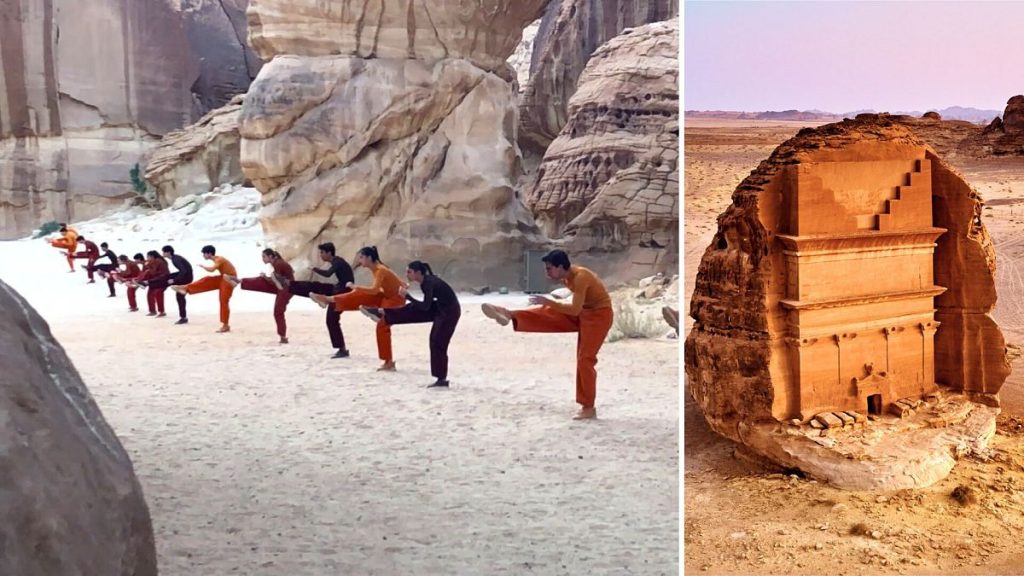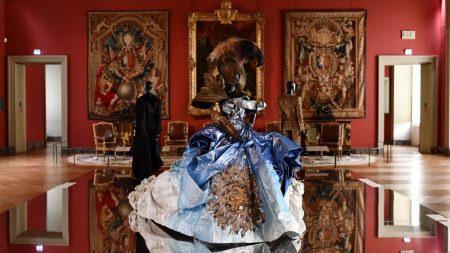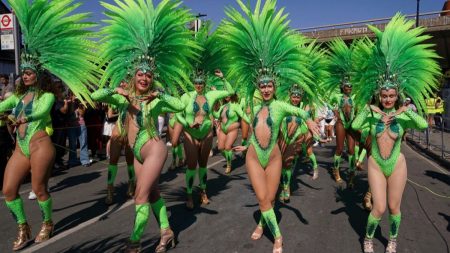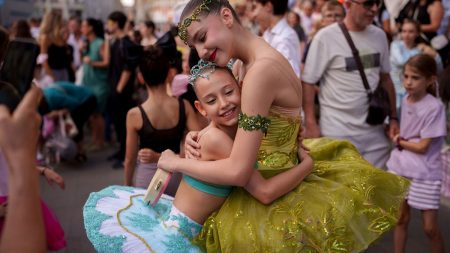Villa Hegra, a nascent Saudi-French cultural institution in AlUla, Saudi Arabia, staged a unique desert dance performance as a precursor to its official opening. This performance, titled “Crossings,” featured 19 young French dancers from the Opéra national de Paris’s Junior Ballet, choreographed by Noé Soulier, director of Angers’ National Centre Contemporary Dance. Soulier designed the piece specifically for non-traditional spaces, leveraging the desert’s vastness and silence to explore the interplay between movement and environment. The dancers, accustomed to structured stages and musical accompaniment, navigated the sandy terrain, their movements creating ephemeral patterns in the air and unique sounds as their feet interacted with the sand. The audience, seated on colourful carpets and pillows scattered across the sand, experienced an intimate connection with the performance, becoming integral participants within the shared desert space.
Soulier embraced the desert’s unique challenges and opportunities, using the vast depth of the landscape to play with scale and perspective. The dancers moved across the expansive terrain, appearing minuscule at times and then drawing close, creating a dynamic visual experience that wouldn’t be possible within the confines of a traditional theatre. The performance emphasized the symbiotic relationship between the dancers and the desert, highlighting the environment’s influence on movement and the transient markings left by the performance. This site-specific approach offered a novel artistic experience for both the dancers and the audience, blurring the boundaries between performance and landscape.
Born from a 2021 bilateral agreement, Villa Hegra embodies a collaborative spirit between Saudi Arabia and France. It seeks to become a central hub for artistic exchange and research, drawing inspiration from AlUla’s rich heritage and natural beauty. Modeled after renowned international cultural institutions like Villa Médicis in Rome and Villa Kujoyama in Kyoto, Villa Hegra will offer residency programs for artists and researchers, fostering cross-cultural dialogue and creative exploration. The institution envisions a collaborative approach to its operations, emphasizing co-creation, co-direction, and co-decision making between Saudi and French partners. This collaborative framework aims to build a vibrant artistic community that bridges cultures and disciplines, enriching the cultural landscape of AlUla and beyond.
Another pre-opening event, “Neuma – The Forgotten Ceremony,” further underscored Villa Hegra’s commitment to intertwining art, heritage, and community. This project, a collaboration between Saudi-American artist Sarah Brahim and French artist Ugo Schiavi, drew inspiration from AlUla’s pre-Islamic rituals and landscape. A multi-faceted installation, it featured a 15-panel glass sculpture in the Wadi Al-Naam canyon, echoing the remnants of an ancient temple. A complementary indoor exhibition at Dar Tantora displayed hand-blown glass sculptures alongside a film documenting the poetic life and breath-centered performance of AlUla resident Muruj Alemam and her children. The project brought together artists, scientists, archaeologists, and community members in a year-long exploration of AlUla’s cultural heritage.
“Neuma – The Forgotten Ceremony,” with its emphasis on breath as a vital life force and a link to ancient traditions, resonated with the philosophical concept of ‘pneuma’ – the animating principle of life. This theme connected the physical and spiritual, bridging the individual with the cosmos. The artists’ work transformed the landscape into a ceremonial space, the glass sculptures serving as musical instruments in a performance involving community members. This immersive experience further highlighted Villa Hegra’s dedication to engaging with the local community and exploring the deep connections between art, history, and the natural environment.
AlUla, situated along the ancient Incense Route, boasts a rich history and breathtaking landscapes, including Hegra, a UNESCO World Heritage Site. The region, with its blend of ancient ruins and modern developments, aims to become a leading global tourist and cultural destination. Villa Hegra plays a crucial role in this transformation, offering a unique space for cultural exchange and artistic exploration. Its temporary home, launching in 2025, will serve as a testing ground for future programming and community engagement. The final cultural center, slated to open in 2026, will be constructed using local materials, further emphasizing the institution’s commitment to sustainability and integration with the surrounding environment. Villa Hegra’s vision extends beyond traditional notions of a cultural institution, aiming to become a vibrant hub that connects the past with the present, the local with the global, and the natural world with artistic expression.














